Table of Contents
Introduction
Significance of Indian Cow Breeds
India boasts some of the most diverse and oldest cattle populations in the world. Renowned for their adaptability, hardiness, and multi-purpose usage, Indian cow breeds have been inseparable from agriculture, dairy, and rural livelihood for centuries.
As compared to crossbred or foreign cattle, local cows are adapted to the diverse climatic conditions of India and need little maintenance. They are valued not only for milk but also for their dung and urine, which are utilized as natural manure, biofuels, and in ayurvedic medicine.
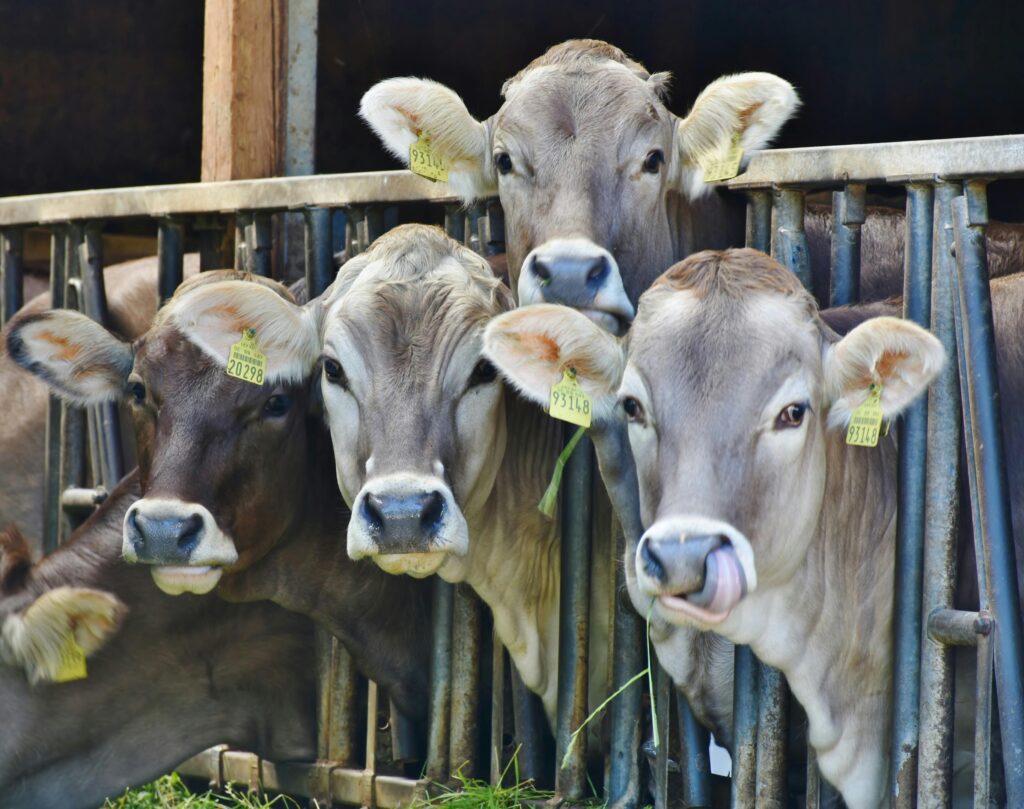
Variety in Indian cattle breeds shows the rich agricultural history of India. Breed types such as Gir, Sahiwal, Red Sindhi, and Tharparkar are famous all over the world for their high-quality milk, whereas breed types such as Kankrej and Ongole are prized for their strength and draught capability.
These animals are not only animals but symbols of culture, very much part of rural society, religious traditions, and sustainable agriculture systems.
Realizing their significance, most experts rate them as the best breed cow in India, particularly in terms of when compared to exotic breeds which tend to perform poorly in domestic conditions.
Increased Relevance in New India
In the last few years, the role of indigenous cattle has increased with growing awareness of A2 milk, which is less difficult to digest and healthier than A1 milk from most exotic breeds.
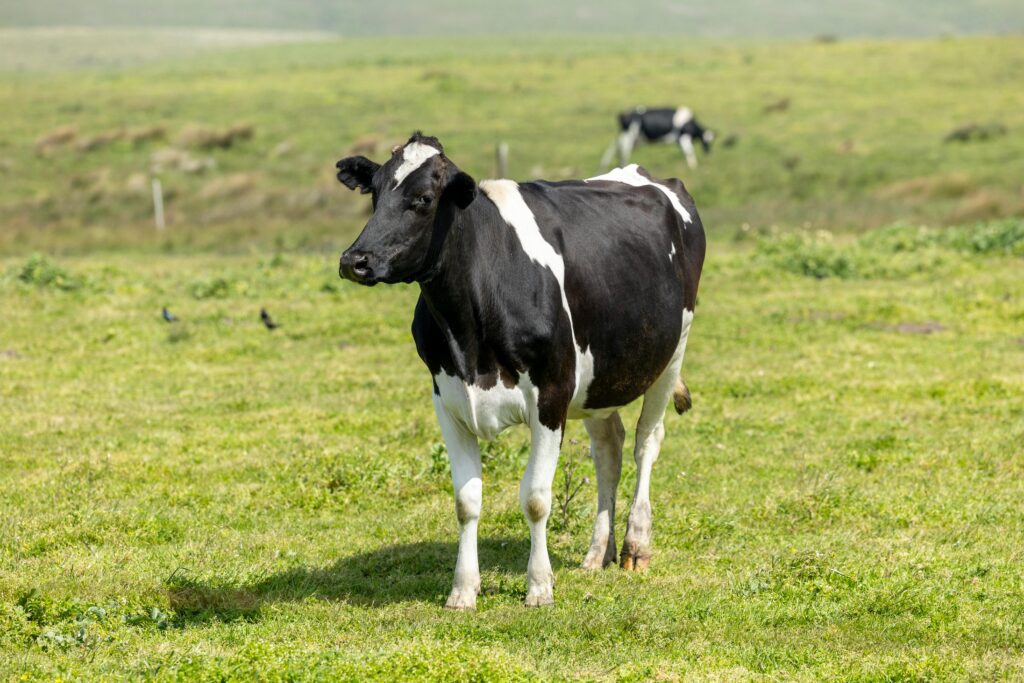
Food consumers are now looking for natural, chemical-free milk products, providing Indian cow breeds a special edge to the dairy industry. Additionally, their resistance to disease and extreme environments positions them perfectly for farmers in resource-poor areas.
Government programs and awareness campaigns are encouraging farmers to preserve and breed native cattle. Indian cattle breed promotion schemes aim to enhance milk yield while maintaining their genetic integrity.
Farmers can utilize the full potential of these breeds by blending traditional know-how with new techniques of breeding, thereby ensuring profitability as well as sustainability.
Scope of the Blog
The blog will analyze the top 10 Indian cow breeds and the advantages of these breeds in detail. It will detail their distinctive features, milk yield potential, adaptability, and overall impact on rural livelihood.
In addition, it will outline the challenges of conserving indigenous breeds, practical solutions, and government assistance that is available.
By the end, readers will have a complete grasp of why such Indian cattle breeds are priceless and how they can be instrumental in creating the future of India’s dairy industry.
Benefits of Indian Cow Breeds
Nutritional and Health Benefits
Among the most renowned benefits of Indian cow breeds is the healthfulness of their milk. In contrast to much of the foreign cattle with A1 type milk, most native breeds yield A2 type milk that is reported to be healthier and more digestible.
It has been associated with lower risks of digestive disorders, heart disease, and allergies and thus enjoys popularity among health food-oriented consumers. In reality, most nutritionists now call out A2 milk as the better one for children, the elderly, and lactose-intolerant individuals.
For instance, the Gir and Sahiwal breeds of cows are famous for yielding high amounts of A2 milk that is high in calcium, protein, and powerful necessary fatty acids. Hence, they are amongst the top breeds cows in India for dairy farmers who look to provide high-quality milk.
Moreover, Indian cattle breeds’ dung and urine are of medicinal and agronomic importance, serving in Ayurvedic formulations and as organic manure. This diversified value provides a guarantee that native cows positively impact nutrition as well as health in India’s food chain and cannot be spared.
Economic Benefits for Farmers
Indian cattle breeds are not only prized for milk but also generate multiple income streams for farmers. Their dung is used extensively to create biogas, which acts as a renewable power source in rural homes.
Cow urine is also a byproduct frequently employed for making organic pesticides and fertilizers, minimizing the dependence of farmers on expensive chemicals.
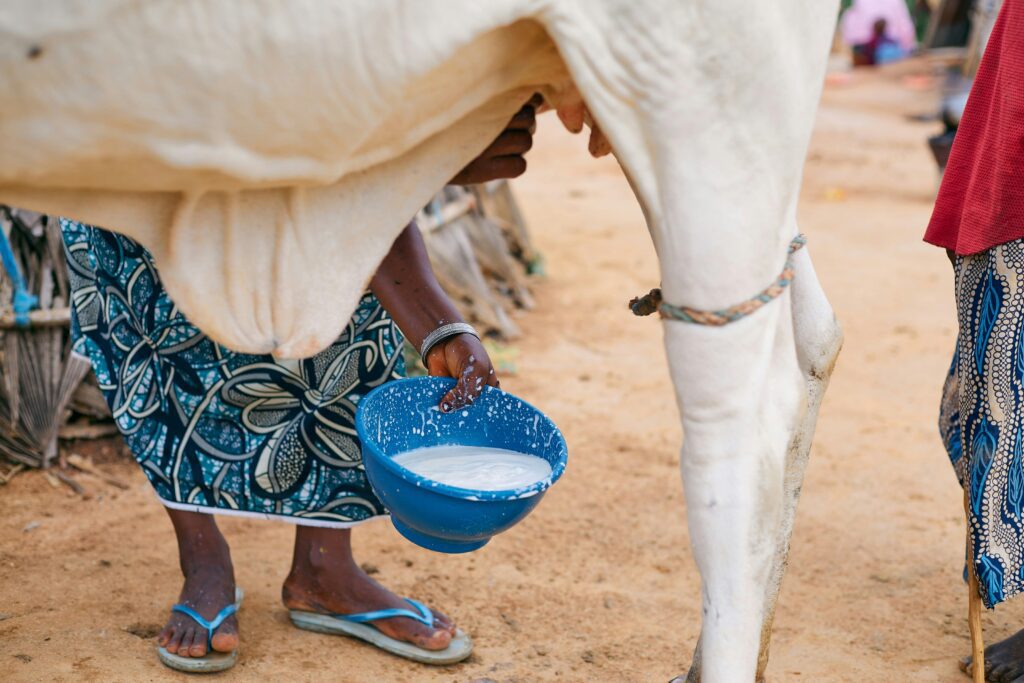
Due to the increasing demand for A2 milk and organic products, farmers who breed native breeds are getting new market spaces. To illustrate, companies offering Gir or Sahiwal cow milk usually command a price twice that of normal milk.
Additionally, indigenous breeds are resilient and need less medical attention, thus lower veterinary expenses. Their local climate adaptability makes them more sustainable and profitable in the long term.
In most rural economies, Indian cow breeds are a means of economic security, providing a consistent amount of dairy, fuel, and farmyard manure.
Cultural and Environmental Benefits
Indian cattle breeds are of great cultural and religious importance, especially in Hinduism, where the cow is considered a sacred animal. The respect has, in turn, led to conservation within temples, gaushalas (shelters for cattle), and people’s organizations throughout the nation.
Apart from their role in culture, these breeds are of great importance in environmental sustainability.
Cattle manure enriches the soil when it is used as fertilizer, raising the yield of crops without the use of chemical fertilizers. Biogas generation from dung also eliminates the need for non-renewable energy sources such as LPG and firewood.
In addition, native breeds are resistant to most diseases by nature, reducing the incidence of epidemics and minimizing the use of antibiotics in milk production.
By helping Indian cattle breeds, farmers and communities are actively encouraging green agriculture while ensuring cultural heritage. Both rural livelihoods and the environment are consolidated by this two-way role, which makes indigenous cattle not only assets but custodians of India’s agricultural future.
Challenges in Conserving and Promoting Indian Cow Breeds
Decline in the Population of Indigenous Breeds
One of the most significant challenges in conserving Indian cow breeds is the consistent decline in their population. In the last few decades, cross-breeding with exotic animals such as Jersey and Holstein Friesian has been extensively encouraged to enhance milk yield.
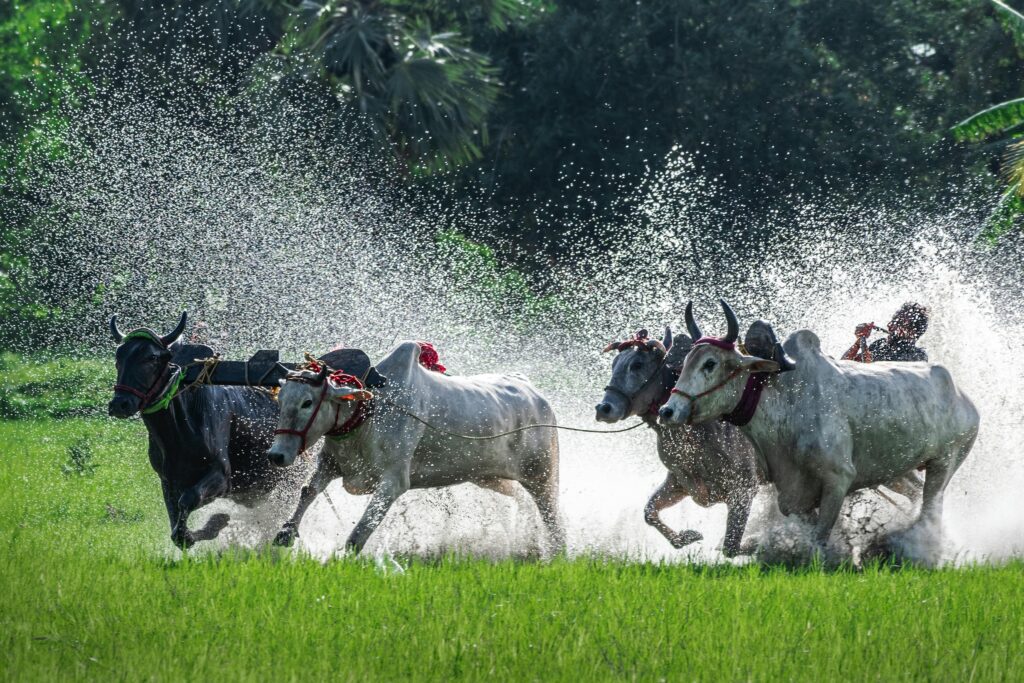
Although cross-breeding has contributed to higher yields, it also resulted in the weakening of pure indigenous germplasm. Consequently, several native breeds are currently endangered or possess extremely low numbers localized to certain areas.
Farmers, being under economic strain, welcome crossbred cattle because of their greater milk yield, pushing indigenous breeds to the sidelines despite their resilience and immunity to diseases.
Economic Pressures on Farmers
Indian farmers, especially marginal and small ones, are under severe economic strain to keep indigenous cows. Indigenous breeds tend to yield less milk than crossbreeds, restricting short-term revenue from dairy farming.
Because milk promotion usually promotes high-yielding cows, farmers are not able to maintain purebred herds. Moreover, the absence of organized procurement systems for indigenous cow milk leaves the economic value of A2 milk and other byproducts unharvested.
Without good financial incentives, farmers gradually move away from raising native breeds.
Limited Awareness and Modernization Gaps
Lack of knowledge among farmers regarding the long-term advantages of Indian cow breeds is another reason behind their dwindling numbers. Indigenous cattle are resistant to diseases by nature, need less care, and can adapt to extreme weather conditions, but these facts are unknown to many farmers.
Additionally, new dairy management technologies and practices tend to be formulated with crossbred or exotic cows in view, increasing the difficulty for native breed farmers to access resources that are specific to their needs.
Veterinary care that is limited, low rates of artificial insemination with purebred semen, and poor breed-specific extension services exacerbate the problem further.
Urbanization and Land Loss due to Grazing
Industrialization and urbanization have severely decreased the opportunities for grazing lands in India.
Cultivation of cattle traditionally relies considerably on open grazing as well as on community pastures, but with diminishing resources, farmers are left with no choice but to rely increasingly on feed and fodder bought from elsewhere.
This makes it more expensive to keep cows and deters small farmers from raising indigenous breeds. Grazing land encroachment, cutting of forests, and absence of good methods of fodder conservation make it hard to raise native cattle in a sustainable manner.
Policy and Institutional Challenges
While the government of India has launched initiatives such as the Rashtriya Gokul Mission and National Dairy Plan to save native cattle, implementation has been a problem. Few farmers are aware of these schemes or encounter bureaucratic obstacles in availing benefits.
Breed improvement initiatives are frequently reserved for only a few known breeds, neglecting numerous other lesser-known varieties. Also, there is a lack of infrastructure for genetic conservation, semen banks, and scientific recording of performance traits.
Absence of a sound policy framework that ensures a balance between productivity and conservation makes it challenging to conserve the genetic heritage of Indian cattle.
Cultural Transitions and Shifts in Preferences
Indian cow breeds traditionally had enormous cultural and religious value and were used beyond milk to manure, urine, and even draught power. But with modernization, mechanization of farming, and new dietary patterns, these functions have lost their importance.
Farmers who previously respected cows for their multifaceted utility now only see them as milk suppliers, relegating cattle breeds that have moderate production but are superior in other characteristics.
This cultural transition diminished respect and compassion earlier linked to native cattle, which further accelerated their decline.
Need for Market Development and Branding
Its other significant challenge is the underdeveloped market for products from indigenous cows. Although A2 milk, cow dung fertilizers, biogas, and Ayurvedic medicines have a vast scope, the lack of organized marketing channels denies farmers opportunities to earn good returns from these products.
In the absence of branding, certification, and broader consumer awareness, products of indigenous cows do not get premium prices. Creating strong value chains is essential to making rearing native cattle economically viable for farmers.
Solutions: Function of Indigenous Cattle in Sustainable Rural Economy and Agriculture
Role in Soil Fertility and Organic Farming
Indian breeds of cows are important for maintaining soil fertility. Soil fertility is essential for sustainable agriculture. They produce dung and urine that are rich in nutrients. This helps improve soil texture and microbial life.
In contrast to chemical fertilizers, which are likely to erode soil health in the long run, cow-based manures rejuvenate fertility naturally. For instance, the practice of vermicomposting and cow dung use in biofertilizers has become a requirement in organic farming activities throughout India.
The old “panchagavya” prepared from cow dung, urine, milk, curd, and ghee is utilised extensively by organic farmers to increase the fertility of the soil and hardiness of the crops.
By adopting such natural methods, the farmers are able to decrease reliance on high-priced synthetic inputs while increasing soil productivity.
Increasing Climate Resilience
Indigenous cattle are very resilient to India’s varied climatic conditions and hence, immensely useful in the context of climate change at the global level. Indian cow breeds like Gir, Tharparkar, and Sahiwal perform well in harsh weather conditions and are easy to maintain.
Their inherent resistance to diseases lowers the requirement for antibiotics and veterinary expenses, making them more cost-effective for farmers.
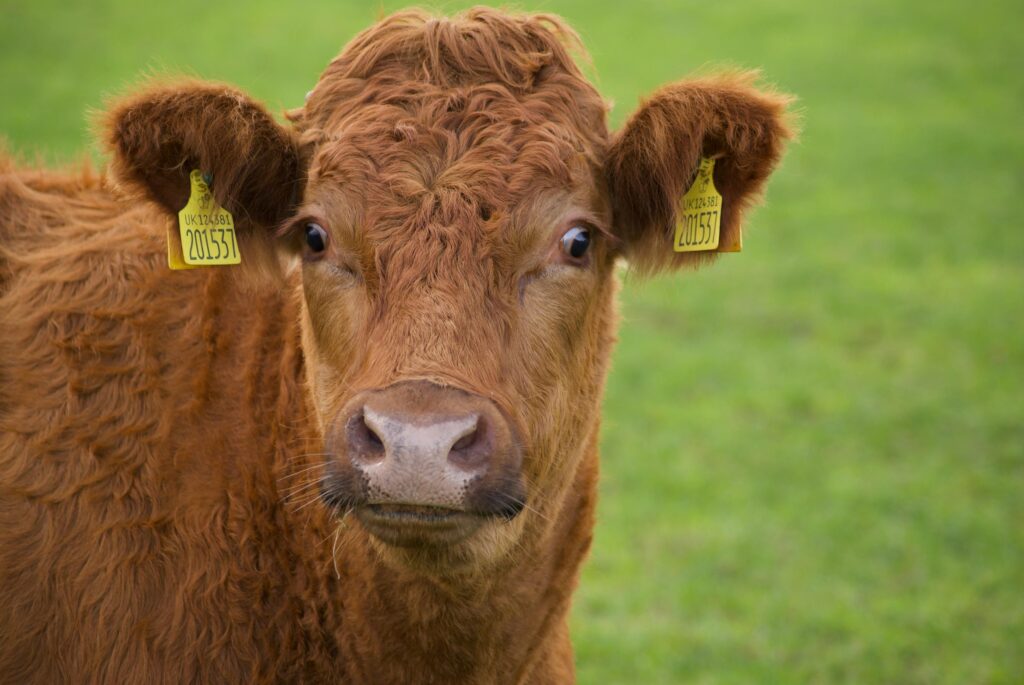
Additionally, their capacity to feed on poor-quality feed and survive during times of drought makes their contribution to rural livelihood consistent even in harsh environments. This flexibility is in agreement with the precepts of sustainable farming.
Promoting Rural Economy Through Value Addition
Native cows provide more than milk—they give a variety of byproducts that contribute substantially to the rural economy. The A2 milk produced by breeds such as Gir and Sahiwal commands premium prices in cities because of its health attributes.
Cow dung is utilized to generate biogas, organic fertilizers, and even eco-products such as utensils and construction materials made of dung. Cow urine is also prized by Ayurveda for its medicinal value and is utilized in herbal tonics and insect repellents.
By diversifying cow byproducts, farmers produce multiple incomes, making farming financially sustainable.
Enhancing Women Empowerment and Community Farming
Rural Indian women are usually directly engaged in cattle rearing and milk production. The low-maintenance nature of indigenous breeds empowers women to take active roles in livestock management.
Self-help groups and cooperative societies have effectively established dairy-based micro-enterprises around Indian cattle breeds, providing rural women with economic autonomy.
Farming community programs, under which batches of farmers rear indigenous cattle collectively and share inputs, minimize costs as well as maximize profits. Such models not only make the rural economy stronger but also encourage social empowerment and inclusion.
Government Schemes for Indigenous Breeds
The Indian government has seen it fit to conserve and promote indigenous cattle. Programs like Rashtriya Gokul Mission, National Dairy Plan, and National Kamdhenu Breeding Centre are for enhanced breed quality, genetic resource conservation, and indigenous cattle farming.
Subsidy is given for the construction of gaushalas, artificial insemination, and establishment of organic dairy farms. Farmers are also eligible for financial support under promotion schemes for organic farming where cow-based inputs are given preference.
But in order to achieve these advantages, farmers should be informed of such programs and actually participate in them.
Market Development and Branding of Indigenous Cow Products
In order for indigenous cows to fully become profitable ventures, organized markets and branding programs need to be formulated. Products such as A2 milk, ghee, organic fertilizers, and herbal medicines require proper certification and labeling to access high-end consumer markets.
A number of startups in India have already started marketing desi cow products as health-oriented and environment-friendly, developing niche segments in urban markets. Farmers’ producer organizations (FPOs) and dairy cooperatives can act significantly to increase production and marketing on a large scale.
By connecting with both domestic and global markets for organic and sustainable products, Indian cattle farming can transform into a profitable business.
Integration with Sustainable Farming Models
The indigenous cattle enhance integrated farming systems, under which crop farming, dairy farming, poultry farming, and fisheries are inter-linked to be optimally efficient.
For instance, cow dung is utilized to generate biogas that can be used as household energy, and the biogas plant slurry is used as fertilizer for the fields. Crop wastes can be used as livestock feeds, hence keeping the farm sustainable and minimizing waste.
The closed-loop system not only saves money but also makes farms stronger. By incorporating indigenous cattle breeds into holistic farming practices, farmers are able to obtain increased profitability and sustainability of the environment.
Indian Cow Breed FAQs
1. What is the best breed cow in India for milk?
For milk production, the Gir, Sahiwal, and Red Sindhi breeds are among the top breed cow in India. Not only do these native cattle yield good A2 milk, but they are also robust, disease-free, and resistant to local climatic conditions.
Gir cows are particularly sought after due to their high butterfat percentage, and thus their milk and ghee remain very nutritious and sought after. Sahiwal is, however, renowned for its predictable milk production and used very extensively in crossbreeding programs to enhance other Indian cow breeds.
2. Why are Indian cattle breeds superior to foreign breeds?
Indian breeds are well suited to the nation’s varied climates, ranging from arid deserts in Rajasthan to moist coasts of Kerala. In contrast to exotic breeds like Jersey or Holstein Friesian, which tend to need much care and more expensive feed, native cows can live on locally available feed.
They are also more resistant to tropical diseases, hence lower veterinary bills. Furthermore, their A2 milk is found to be healthier than the A1 milk of most foreign breeds, and thus Indian cattle breeds are more sustainable and advantageous in the long term.
3. How do government schemes assist in saving indigenous cattle breeds?
Various schemes such as the Rashtriya Gokul Mission and National Dairy Plan have been initiated by the government of India to preserve and develop native breeds. Such schemes emphasize genetic upgradation, establishment of breeding farms, and subsidies to farmers breeding Indian cattle breeds.
Awareness programs and training imparting sustainable dairy management are also available for the benefit of farmers. Through such schemes, farmers can enhance productivity while preserving the country’s traditional cattle heritage.
4. Are Indian cow breeds suitable for organic farming for profit?
Yes, Indian cow breeds form a part of the organic farming systems. Their urine and dung are utilized to make natural fertilizers, bio-pesticides, and soil conditioners like panchagavya.
Not only does this minimize the need for expensive chemical inputs, but it also enriches soil fertility and enhances crop yields. Because organic crops command premium prices in the market, incorporating native cattle in agricultural systems can dramatically improve profitability.
Indeed, most organic farmers view indigenous breeds as necessary for farm sustainability and ecological balance.
5. What are the primary challenges in promoting indigenous cattle farming?
Major challenges are the dwindling number of pure native cows, reduced milk output relative to crossbreds, absence of organized markets for desi cow products, and reduction of grazing land due to urban sprawl.
Farmers also lack ease of access to modern technology and veterinary care specific to native breeds. Nevertheless, the increasing consumer awareness of the health advantages of A2 milk and government schemes’ growing support are contributing to an escalation in demand for Indian cattle breeds.
With well-developed markets, branding, and farmer education, such issues can be tackled very well.
Conclusion
Indian cow breeds are not just dairy animals but a living symbol of the nation’s culture, agriculture, and rural economy. For hundreds of years, indigenous cattle have sustained agricultural communities through milk, dung, draught power, and even herbal medicines.
In the current age, when sustainable agriculture and organic living are becoming increasingly significant, these indigenous cattle are paying dividends once again.
Their inherent strength, adaptability to varied climates, and production of extremely nutritious A2 milk make them highly valuable resources for farmers and consumers alike.
The path of saving and marketing Indian breeds of cattle is not smooth. Problems such as depopulation, restricted grazing areas, financial stress on farmers, and absence of organized markets require attention at the earliest.
But solutions are already on the anvil in the shape of government programs, cooperative milk models, organic production methods, and innovative start-ups promoting products of desi cows.
By combining traditional knowledge with modern practices, it is possible to preserve Indian cow breeds to come in handy for future generations.
For farmers, the secret is understanding the long-term benefits of indigenous breeds. Though they will not produce as much milk as exotic cows, low maintenance, immunity from disease, and a number of byproducts yield higher sustainability.
For consumers, purchasing A2 milk and native cow organic products generates demand that encourages farmers to raise more indigenous cattle. Policymakers also have an important role to play through enhancing breeding programs, providing funds, and ensuring equitable markets for desi cow products.
In summary, saving Indian cow breeds is not merely saving a genetic asset but creating a healthier and more sustainable future for agriculture and society. Each farmer raising a desi cow, each consumer opting for A2 milk, and each policymaker promoting indigenous breeds is helping to achieve this goal.
The moment is appropriate to make a move—be it as a farmer wanting to diversify, a consumer searching for healthier options, or a student investigating sustainable practices, adopting Indian cattle breeds is a move toward a successful and green India.

Pingback: Sustainable Livestock Farming: Unlocking Powerful Solutions to Cut Emissions & Boost Returns 2025 -
Absolutely! Livestock farming has been at the heart of human survival and growth for centuries. Beyond just food, it provides livelihoods, leather, wool, and other raw materials that sustain both rural and urban economies. The real challenge today is finding ways to make livestock farming more sustainable so it can continue supporting communities while protecting the environment.
Pingback: Cow Farm Success: 5 Powerful Holstein Cow & Dairy Cows Secrets -
Absolutely! Success in dairy farming relies on solid strategies, careful planning, and effective management. Holstein cows, in particular, are highly valued worldwide for their exceptional milk yield, making them a popular choice for farmers aiming for productivity and profitability.